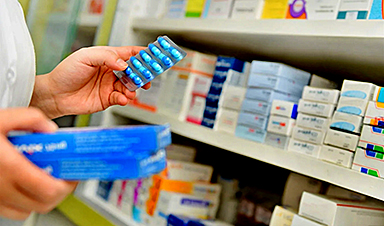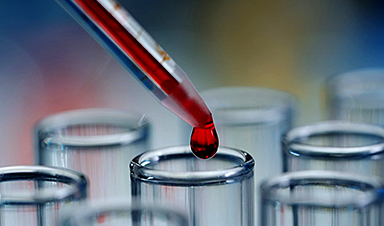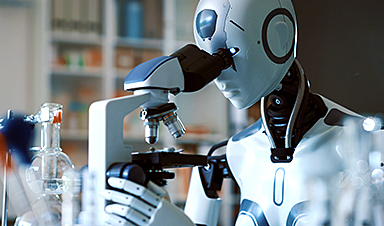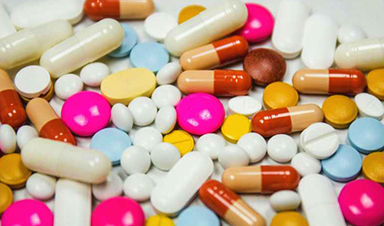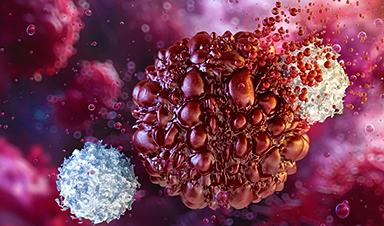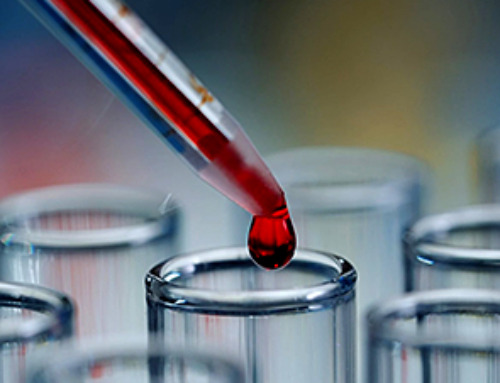Antibacterial resistance occurs when antibiotics fail to treat bacterial infections. This incidence is considered one of the top global health threats, stemming from the misuse or overuse of antibiotics in humans and animals.1
The global impact of antibacterial resistance
Bacterial infections are common and can impact various organs and tissues in the human body.² Clinicians typically prescribe antibiotics to treat these infections; however, many bacteria have developed resistance to these treatments, including those considered the “last line of defense,” such as vancomycin and polymyxin. The prevalence of multi-drug-resistant (MDR) bacteria is well-documented.
In 2015, the World Health Organization initiated the Global Antimicrobial Resistance and Use Surveillance System (GLASS) to monitor antimicrobial resistance globally.³ The 2022 GLASS data showed a significant rise in antibiotic resistance, reducing the effectiveness of commonly used antibiotics against widespread bacterial infections.
Methicillin-resistant Staphylococcus aureus (MRSA) and third-generation cephalosporin-resistant Escherichia coli (E. coli) have been reported in 76 countries. In 2020, one in five individuals was diagnosed with urinary tract infections caused by E. coli, which showed reduced responsiveness to commonly prescribed antibiotics, including ampicillin, fluoroquinolones, and co-trimoxazole. Additionally, Klebsiella pneumoniae, an intestinal bacterium, exhibited increased antibiotic resistance.³
The Organization for Economic Cooperation and Development (OECD) projects a twofold increase in resistance to last-resort antibiotics by 2035. These findings emphasize the urgent need for innovative strategies to combat antibacterial resistance and underscore the importance of expanding global surveillance efforts.
Drug-design strategies to overcome antibacterial resistance
Most currently available antibiotics are derived from discoveries made before 2010. Given the increasing antibacterial resistance to many common antibiotics, there is an urgent need to develop new antibacterial agents that can effectively target a broad range of bacterial strains. Below are some of the key innovative drug-design strategies being explored to address bacterial resistance.
Antimicrobial Peptides (AMPs)
A range of AMPs have been designed to combat bacterial resistance.⁴ For instance, the antibiofilm peptide SAAP-148, derived from the parent peptide LL-37, has shown high efficacy against MDR pathogens.⁵ Proline-rich AMPs (PrAMPs), with multiple intracellular targets and low toxicity, are promising candidates, especially for eliminating Gram-negative pathogens. Commercially available peptide antimicrobials, such as polymyxin and short bacillus peptide, are currently used for therapeutic purposes.
Adjuvants
Efflux pump inhibitors (EPIs) and enzymatic inhibitors are commonly used as adjuvants to enhance antibiotic efficacy.⁶ For example, β-lactamase inhibitors are combined with β-lactam antibiotics to prevent the hydrolysis of the antibiotic’s lactam ring, preserving its structural integrity and antibacterial effectiveness.
Efflux pumps contribute significantly to both intrinsic and acquired bacterial resistance.⁷ Current research focuses on identifying and inhibiting EPIs to restore the potency of existing antibiotics. For instance, NorA, a chromosomally encoded multidrug efflux pump in MRSA, can be inhibited with synthetic antigen-binding fragments (Fabs).⁸
Nanomaterials
Metal-based nanomaterials, including zinc, silver, and gold, are utilized for bacterial infection detection and treatment. The antibacterial properties of these nanomaterials depend on their shape, size, and composition. Silver nanoparticles are widely used in biosensing, drug delivery, and antimicrobial wound dressings. Recent research highlights the effectiveness of gold nanoparticles against antibiotic-resistant bacteria.⁹
Cationic polymers, such as chitosan, polyquaternary ammonium salts (PQASs), and polyethyleneimine (PEI), possess intrinsic antibacterial properties.¹⁰ These positively charged materials interact with negatively charged bacterial surfaces, damaging bacterial cell walls or membranes and leading to bacterial cell death.
Phytochemicals
Plants produce secondary metabolites with antibacterial properties, such as phenols, coumarin alkaloids, and organosulfur compounds found in seeds, roots, leaves, stems, flowers, and fruits.¹¹ These compounds are promising candidates for addressing antibacterial resistance.
Plant extracts and essential oils are under study for their potential to modify bacterial antibiotic resistance. Mechanistically, secondary metabolites inhibit efflux pumps, biofilm synthesis, bacterial cell wall synthesis, and bacterial physiology, modulating antibiotic susceptibility. Studies show that alkaloids and phenolic compounds can inhibit the efflux pumps in Staphylococcus aureus, E. coli, and MRSA.
RNA silencing
RNA silencing, a natural bacterial gene regulation mechanism, involves complementary cis and trans sequences that interact with regulatory regions on mRNA (antisense sequences). Synthetic antisense sequences can be designed to inhibit the translation of resistance-associated enzymes.¹²
CRISPR-Cas system
The CRISPR-Cas system (clustered regularly interspersed short palindromic repeats-associated protein) is an adaptive immune system in bacteria, protecting against viruses, phages, and foreign genetic material.¹³
As a genetic engineering tool, CRISPR-Cas can selectively target and modify bacterial genomes, potentially reducing or eliminating antibiotic resistance. This strategy shows promise in treating MDR infections.¹⁴
Phage therapy
Although phage therapy has been available for decades, its use declined with the advent of antibiotics. The recent rise in antibiotic resistance has reignited interest in phage therapy. For example, phage therapy successfully treated a cystic fibrosis patient infected with drug-resistant Mycobacteroides abscessus.¹⁵ Bacteriophages have also shown efficacy in treating elderly patients with S. aureus prosthetic joint infections.¹⁶
Drug delivery systems
Drug delivery systems (DDSs) increase antibiotic biodistribution and bioavailability. This strategy can effectively reduce antibiotic resistance and prolong novel antibiotics’ lifespan. Scientists adopted a “Trojan horse” strategy in designing and developing DDSs.
This strategy entails merging antibacterial agents with different carriers, such as exosomes, liposomes, erythrocytes, self-assembled peptides, and polymers. By targeting the unique microenvironment of infected tissue or via external guidance, DDSs enable drug release at the specific site.16
Future research outlook
The availability of various antibiotic types resulted in the development of complex mechanisms of resistance, particularly the emergence of MDR bacteria. To combat the situation, scientists are focused on uncovering the bactericidal mechanism of antibiotics and the mechanism of bacterial resistance.
The advancements in material science, nanotechnology, and gene editing tools have presented multiple opportunities for this strand of research. DDS technology has also exhibited immense potential in helping overcome bacterial resistance in the future.
References
- Mancuso G, et al. Bacterial Antibiotic Resistance: The Most Critical Pathogens. Pathogens. 2021;10(10):1310. doi: 10.3390/pathogens10101310.
- Doron S, Gorbach SL. Bacterial Infections: Overview. International Encyclopedia of Public Health. 2008:273–82. doi: 10.1016/B978-012373960-5.00596-7.
- Antimicrobial resistance. World Health Organization; https://www.who.int/news-room/fact-sheets/detail/antimicrobial-resistance. 2023; Assessed on October 5, 2024.
- Xuan J, et al. Antimicrobial peptides for combating drug-resistant bacterial infections. Drug Resistance Updates. 2023; 68, 100954. doi.org/10.1016/j.drup.2023.100954
- Shi J. et al. The antimicrobial peptide LI14 combats multidrug-resistant bacterial infections. Commun Biol. 2022;5, 926. doi.org/10.1038/s42003-022-03899-4
- El-Khoury C, et al. The role of adjuvants in overcoming antibacterial resistance due to enzymatic drug modification. RSC Med Chem. 2022;13(11):1276-1299. doi: 10.1039/d2md00263a.
- Gaurav A, et al. Role of bacterial efflux pumps in antibiotic resistance, virulence, and strategies to discover novel efflux pump inhibitors. Microbiology (Reading). 2023;169(5):001333. doi: 10.1099/mic.0.001333.
- Brawley DN, et al. Structural basis for inhibition of the drug efflux pump NorA from Staphylococcus aureus. Nat Chem Biol. 2022;18(7):706-712. doi: 10.1038/s41589-022-00994-9.
- Rizvi SMD, et al. Antibiotic-Loaded Gold Nanoparticles: A Nano-Arsenal against ESBL Producer-Resistant Pathogens. Pharmaceutics. 2023;15(2):430. doi: 10.3390/pharmaceutics15020430.
- Carmona-Ribeiro AM, de Melo Carrasco LD. Cationic antimicrobial polymers and their assemblies. Int J Mol Sci. 2013;14(5):9906-46. doi: 10.3390/ijms14059906.
- Ashraf MV, et al. Phytochemicals as Antimicrobials: Prospecting Himalayan Medicinal Plants as Source of Alternate Medicine to Combat Antimicrobial Resistance. Pharmaceuticals. 2023; 16(6):881. doi.org/10.3390/ph16060881
- Jani S, et al. Silencing Antibiotic Resistance with Antisense Oligonucleotides. Biomedicines. 2021;9(4):416. doi: 10.3390/biomedicines9040416.
- Xu Y, Li Z. CRISPR-Cas systems: Overview, innovations and applications in human disease research and gene therapy. Comput Struct Biotechnol J. 2020;18:2401-2415. doi: 10.1016/j.csbj.2020.08.031.
- Tao S, et al. The Application of the CRISPR-Cas System in Antibiotic Resistance. Infect Drug Resist. 2022;15:4155-4168. doi: 10.2147/IDR.S370869.
- Recchia D, et al. Mycobacterium abscessus Infections in Cystic Fibrosis Individuals: A Review on Therapeutic Options. Int J Mol Sci. 2023;24(5):4635. doi: 10.3390/ijms24054635.
- Yao J, et al. Recent Advances in Strategies to Combat Bacterial Drug Resistance: Antimicrobial Materials and Drug Delivery Systems. Pharmaceutics. 2023;15(4):1188. doi: 10.3390/pharmaceutics15041188.
News
Researchers propose five key questions for effective adoption of AI in clinical practice
While Artificial Intelligence (AI) can be a powerful tool that physicians can use to help diagnose their patients and has great potential to improve accuracy, efficiency and patient safety, it has its drawbacks. It [...]
Advancements and clinical translation of intelligent nanodrugs for breast cancer treatment
A comprehensive review in "Biofunct. Mater." meticulously details the most recent advancements and clinical translation of intelligent nanodrugs for breast cancer treatment. This paper presents an exhaustive overview of subtype-specific nanostrategies, the clinical benefits [...]
It’s Not “All in Your Head”: Scientists Develop Revolutionary Blood Test for Chronic Fatigue Syndrome
A 96% accurate blood test for ME/CFS could transform diagnosis and pave the way for future long COVID detection. Researchers from the University of East Anglia and Oxford Biodynamics have created a highly accurate [...]
How Far Can the Body Go? Scientists Find the Ultimate Limit of Human Endurance
Even the most elite endurance athletes can’t outrun biology. A new study finds that humans hit a metabolic ceiling at about 2.5 times their resting energy burn. When ultra-runners take on races that last [...]
World’s Rivers “Overdosing” on Human Antibiotics, Study Finds
Researchers estimate that approximately 8,500 tons of antibiotics enter river systems each year after passing through the human body and wastewater treatment processes. Rivers spanning millions of kilometers across the globe are contaminated with [...]
Yale Scientists Solve a Century-Old Brain Wave Mystery
Yale scientists traced gamma brain waves to thalamus-cortex interactions. The discovery could reveal how brain rhythms shape perception and disease. For more than a century, scientists have observed rhythmic waves of synchronized neuronal activity [...]
Can introducing peanuts early prevent allergies? Real-world data confirms it helps
New evidence from a large U.S. primary care network shows that early peanut introduction, endorsed in 2015 and 2017 guidelines, was followed by a marked decline in clinician-diagnosed peanut and overall food allergies among [...]
Nanoparticle blueprints reveal path to smarter medicines
Lipid nanoparticles (LNPs) are the delivery vehicles of modern medicine, carrying cancer drugs, gene therapies and vaccines into cells. Until recently, many scientists assumed that all LNPs followed more or less the same blueprint, [...]
How nanomedicine and AI are teaming up to tackle neurodegenerative diseases
When I first realized the scale of the challenge posed by neurodegenerative diseases, such as Alzheimer's, Parkinson's disease and amyotrophic lateral sclerosis (ALS), I felt simultaneously humbled and motivated. These disorders are not caused [...]
Self-Organizing Light Could Transform Computing and Communications
USC engineers have demonstrated a new kind of optical device that lets light organize its own route using the principles of thermodynamics. Instead of relying on switches or digital control, the light finds its own [...]
Groundbreaking New Way of Measuring Blood Pressure Could Save Thousands of Lives
A new method that improves the accuracy of interpreting blood pressure measurements taken at the ankle could be vital for individuals who are unable to have their blood pressure measured on the arm. A newly developed [...]
Scientist tackles key roadblock for AI in drug discovery
The drug development pipeline is a costly and lengthy process. Identifying high-quality "hit" compounds—those with high potency, selectivity, and favorable metabolic properties—at the earliest stages is important for reducing cost and accelerating the path [...]
Nanoplastics with environmental coatings can sneak past the skin’s defenses
Plastic is ubiquitous in the modern world, and it's notorious for taking a long time to completely break down in the environment - if it ever does. But even without breaking down completely, plastic [...]
Chernobyl scientists discover black fungus feeding on deadly radiation
It looks pretty sinister, but it might actually be incredibly helpful When reactor number four in Chernobyl exploded, it triggered the worst nuclear disaster in history, one which the surrounding area still has not [...]
Long COVID Is Taking A Silent Toll On Mental Health, Here’s What Experts Say
Months after recovering from COVID-19, many people continue to feel unwell. They speak of exhaustion that doesn’t fade, difficulty breathing, or an unsettling mental haze. What’s becoming increasingly clear is that recovery from the [...]
Study Delivers Cancer Drugs Directly to the Tumor Nucleus
A new peptide-based nanotube treatment sneaks chemo into drug-resistant cancer cells, providing a unique workaround to one of oncology’s toughest hurdles. CiQUS researchers have developed a novel molecular strategy that allows a chemotherapy drug to [...]
